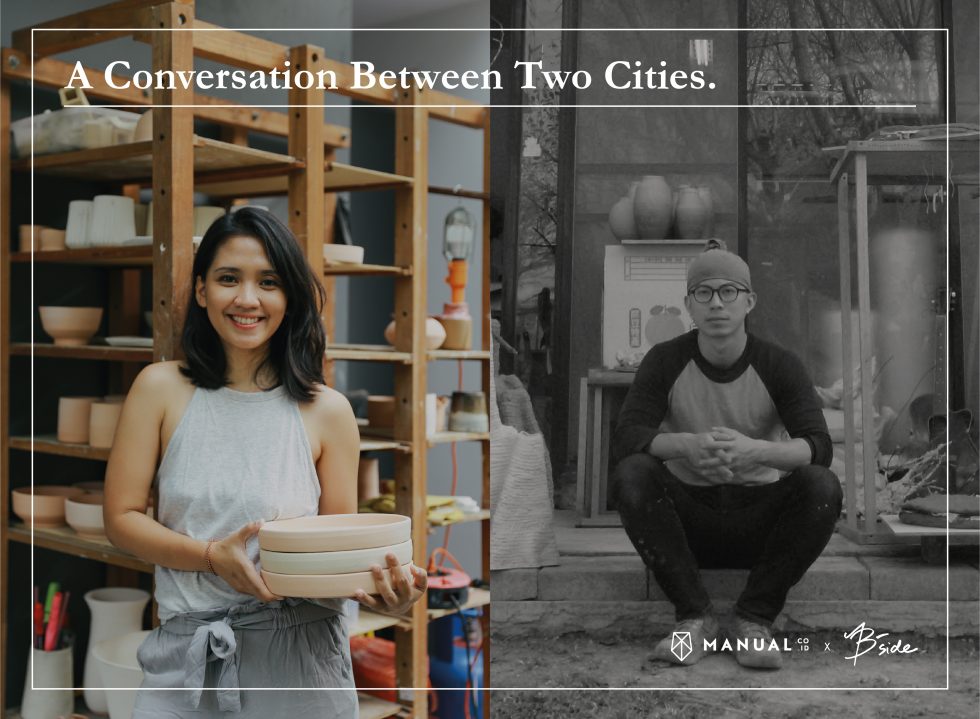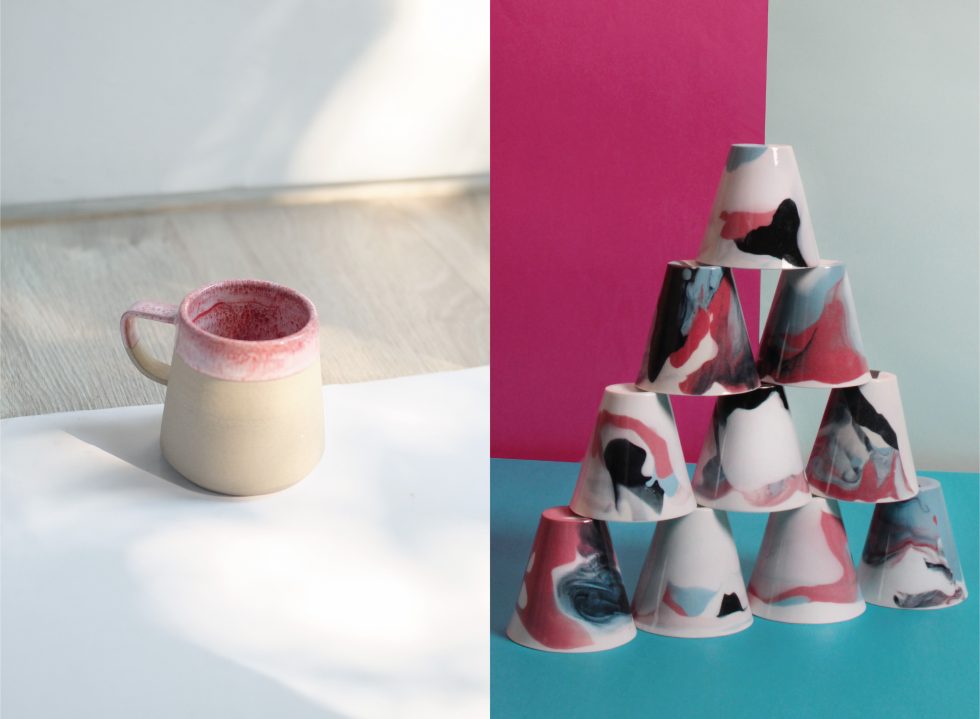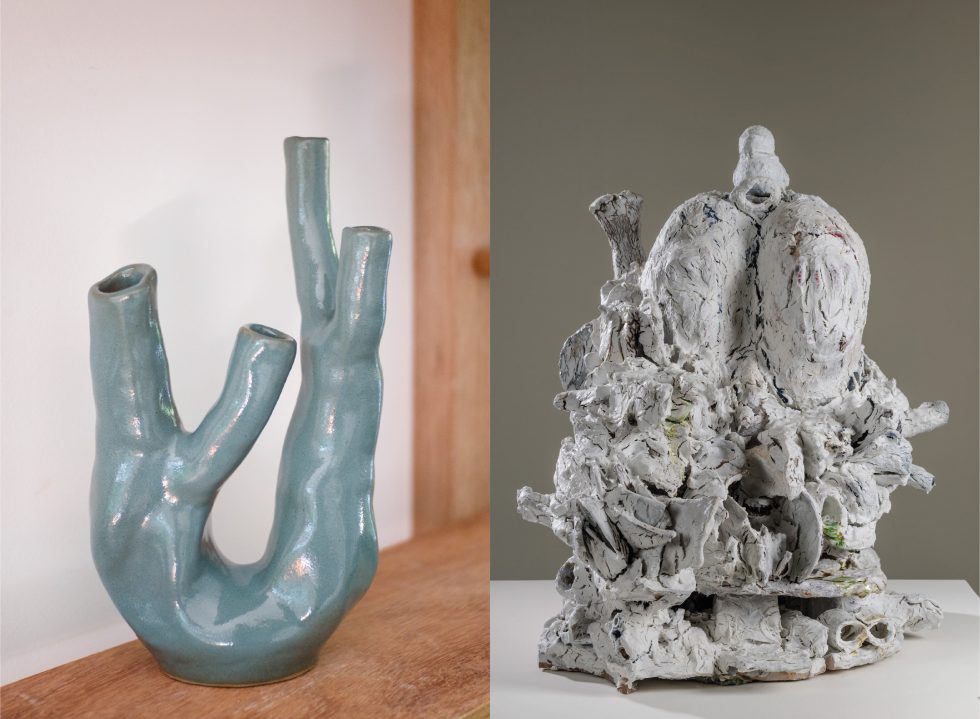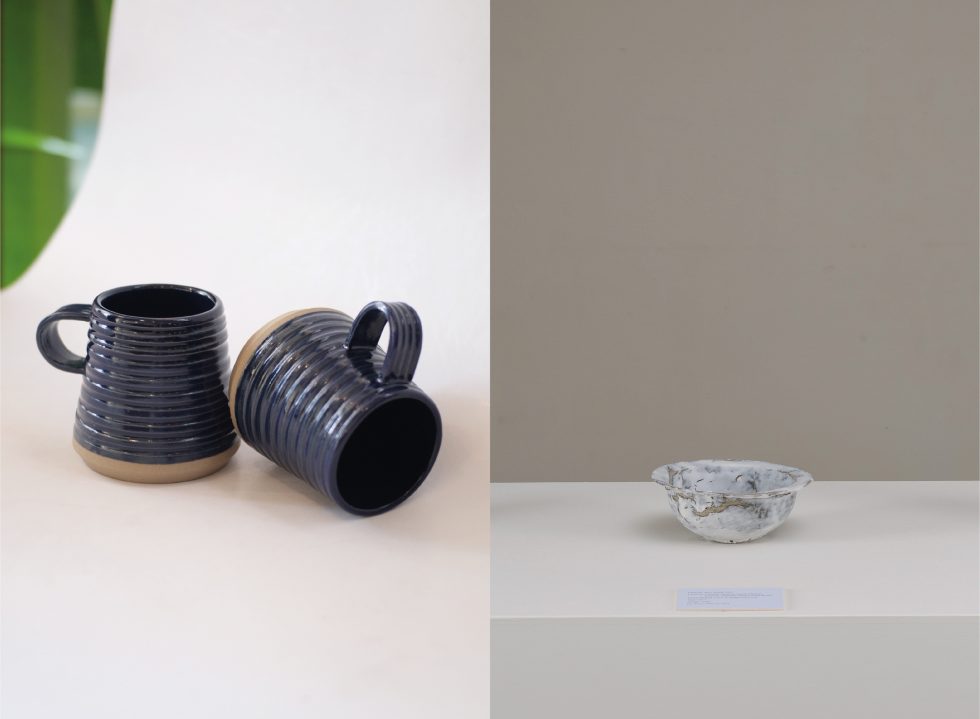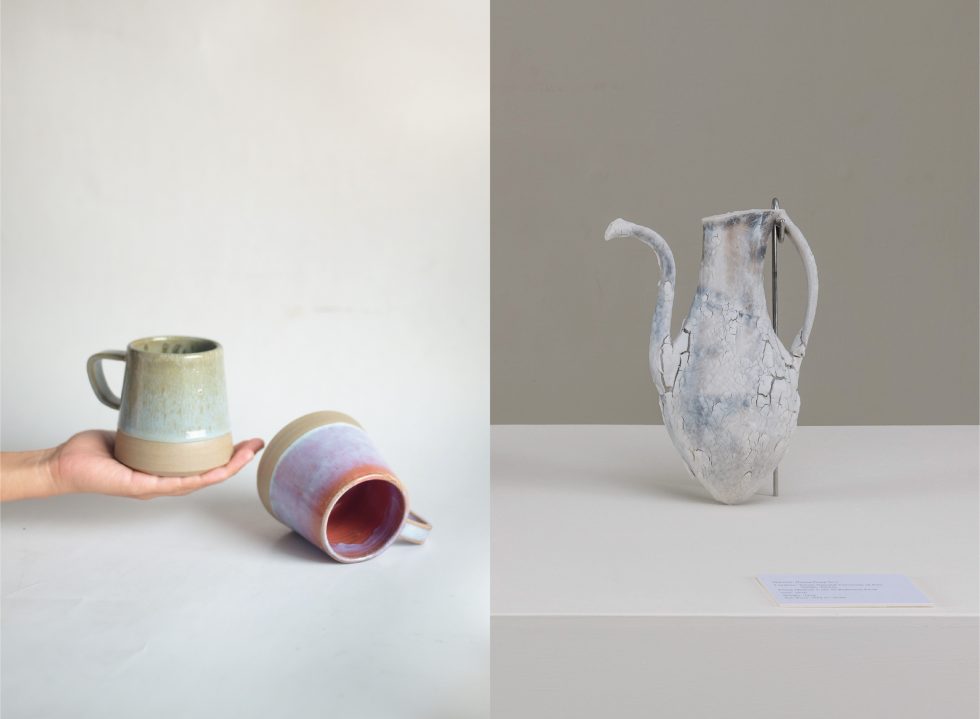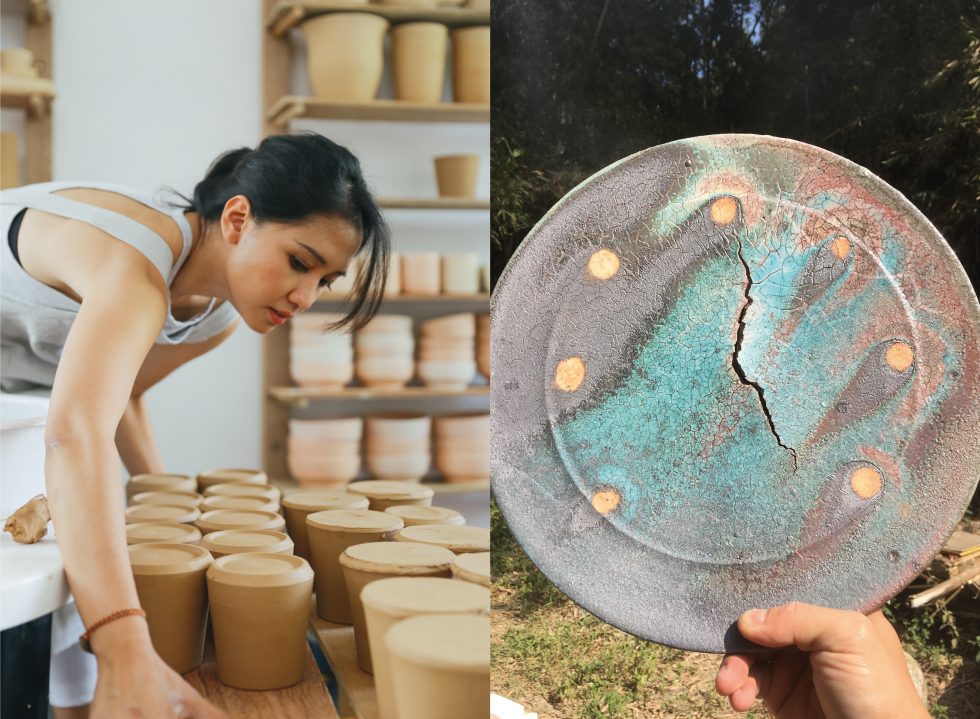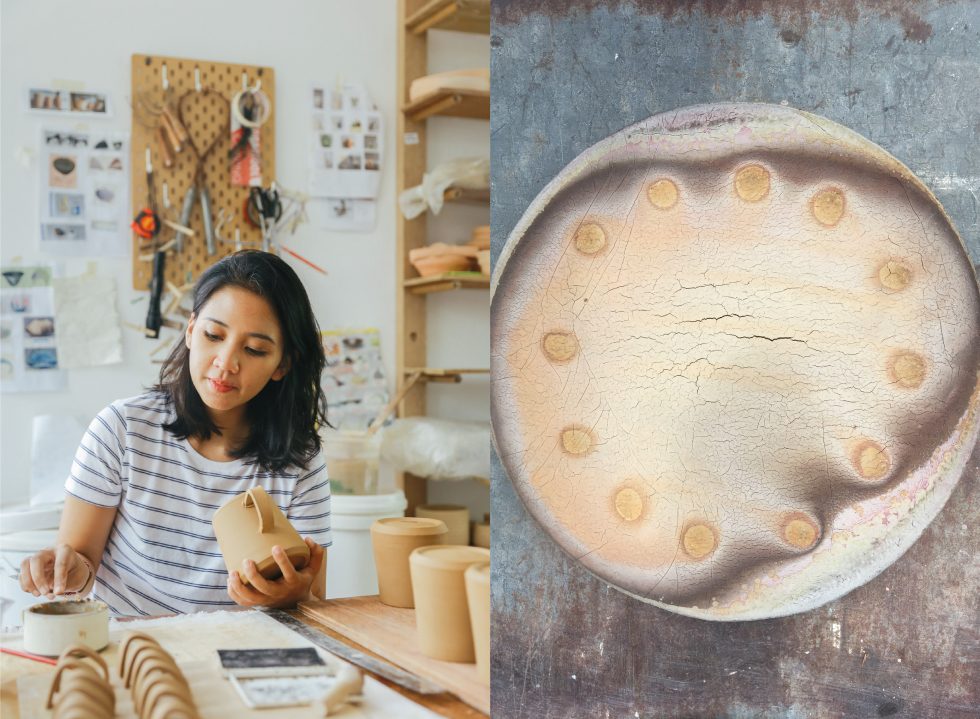Conversation Between Two Cities is a series of three articles that aims to showcase the glimpse of differences and similarities found in Jakarta’s and Singapore’s creative industry, as two noted figures exchange their working experience. Read more for the photographers and musicians.
Ayu Larasati chanced upon ceramics to become the very few local artisan ceramist with an independent studio to her name. Alongside, she co-owns a boutique in Jakarta and leads workshops as she juggles her career and motherhood.
Tok Yu Xiang (Todd) is a Taiwan-based Singaporean ceramist whose curiosity for clay and pottery has brought him around the world as he continues to explore the field. He’s recognised for his knack in wood firing technique.
—
Ayu Larasati (AL): I guess I just want to know how you started to become a potter?
Tok Yu Xiang (TYX): I went to school without knowing what I wanted. I was studying a major at Lasalle College. You know, the school was very experimental and I was more interested in performance art. I found clay before I turned 21. Back then, we didn’t learn a lot of technicalities about clay, so I felt like I was deprived of that. Along the way, I hunger for more knowledge about clay. After my military service, I decided to work and save up money to travel and learn. I went on a quest to go overseas as much as I can to learn from other ceramists and artists. So that’s how I got into this. How about you?
AL: I was trained as an industrial designer, actually. It was my second year and we had to take classes. I have a background in woodworking and metal welding and took two ceramics classes. After that, I went to work as a product designer and fell out of touch with working with my hands, because when you’re working you don’t really have time to make things on your own. I also already had a kid; my son was really young so I was trying to make something without having to leave home. Clay was actually one of the things you can do at home, something you can make in the kitchen and bring it to fire somewhere else. I thought the arrangement was very convenient for me and my situation.
TYX: How’s the pottery scene in Jakarta?
AL: It’s very interesting because there are many more independent ceramic studios now compared to two or three years ago. But we could have more. For example, in Canada, there’s plenty of independent ceramic makers that form a strong community. Here, they’re still emerging, the community isn’t as strong, and there’s less than 6 of them in the city that do it full-time. The others have it as a hobby and part-time, which is really fine. But to make it full-time is very challenging, and not all of us have the privilege to do that.
TYX: Yeah, I think that’s also how Southeast Asian people deal with ceramics. We don’t have a strong cultural background and I think we use a lot of plastic more than ceramics. I feel it’s the same in Singapore – more people want to learn but… I don’t know like, in Jakarta, do they really buy ceramics there?
AL: I think it’s not our culture to use pottery. For example, if you take a look in Japan they buy ceramics like they buy clothes. But here… I agree with what you said. We still use a lot of plastic, a lot of mass-produced ceramics. The awareness of having handmade ceramics as your daily ritual is very new. A lot of things I do is to introduce this – very niche and very new – idea to people. Is it different in your case because you produce more art pieces than functional ones, right?
TYX: I split myself into two parts. One part of me, I practice my art – it could be ceramics, it could be some other things. And the other half of me because I have to make a living and I have this set of skills that I use to supply my clients’ needs. Right now, I live in Taiwan and Taiwan has a tea culture. They look for teacups, tea bowls and I can survive by making these, sort of. But when I go back to Singapore there’s no such market, it’s really difficult because I do woodfire pottery and Singapore doesn’t have those facilities. But the interesting thing is, tea culture is slowly picking up in Singapore. So, the demand is slowly growing from there, but other than that I think Singaporeans don’t really see a lot of good in that and prefer affordable ceramics.
“It’s challenging to do commercial work when our approach is very artistic.” – Ayu Larasati
AL: So, would you say one of your first projects was a project for a teahouse?
TYX: Ah, what was the first professional project that I got and I really enjoyed doing? I got a lot of projects to make cups and tea bowls but I’m not really happy about them. I think… Two months ago, I was invited to Finland to conduct a wood firing programme. To me, it was one of the things that I’m satisfied with – the people acknowledged my skills in wood firing. Because I feel that most of my clients don’t really know the quality that they are looking for. They just want a certain colour – very simple, good for the money…
AL: I think to be able to appreciate wood firing, you have to see beyond, beyond the colours, because it’s the process of wood firing that’s very specifically wood fire that makes the piece valuable.
TYX: Yeah…
AL: I feel the same way too. People in Jakarta, maybe they are not aware that in gas firing, there’s oxidation, there’s reduction – that’s why these pieces cannot be consistent. And when we do commercial work, sometimes they just want consistency. Like restaurants, they want everything to be the same colour, which is kind of pretty impossible to do because it depends on the placement of the pieces. They vary from top shelf to bottom shelf – this is variation. It’s challenging to do commercial work when our approach is very artistic.
TYX: So how do you manage having a kid and a studio, and all these?
AL: The studio is running on a very lean operation right now, there are two other full-time makers in the studio, so I’m not by myself. But when we do a large project, we have a freelancer – he has an independent studio also. He does throwing and our methods are pretty much similar. With them… we have about 8 people, but the partnership is only for large projects. Sometimes I do commission work that I handle myself. They’re more sculptural, bigger and challenging.
TYX: Interesting, so in Jakarta, there are a few small production houses…
AL: Very small ones, because the big manufacturer factories here don’t open their doors.
TYX: In Singapore, I don’t think we have production houses. Actually, in Singapore, it’s more based on teaching ceramics as a hobby.
AL: Is there any misunderstanding about the profession of a potter that you want to clarify?
TYX: Because in Singapore they just want to make money out of teaching ceramics, they are not thinking much about production, they are not thinking deeper about designing and creating with clay. Every time we need to produce a similar product we need to do so many tests. Kiln tests, firing tests. And we have to consider how many to make in order to achieve at least a 60% success rate. I find that, when I get to know my colleagues in Singapore, they shy away from this technical stuff which I’m very curious, because why…
AL: I can completely relate to that. I think in terms of hobby and teaching, the easiest way to make money in the city is the same. If you’re selling workshops, it’s easier than actually selling your own work. It takes a while for you to be at the price you are happy with. People still need to be informed about the process of handmade ceramics and we do so many testing to get it right. It takes time and a lot of engagement with your audience to sell. It takes a while to build your aesthetic and have your voice from clay to story. I think if I wanted to just focus on selling workshops it would be much easier for me. And for the technicalities, even professionals skip that process because that’s the hard part too.
TYX: Can you talk about the stigma in Jakarta?
AL: I think the industry here is very much male-dominated. And it’s not only in ceramics but all crafts, like wood or metal – everything is dominated by males. And they smoke a lot in studios and I have asthma. And I don’t know why I feel like I’m the most organised. When it comes to tools… a lot of people are very careless. This has nothing to do with gender but I think the environment feels very masculine. Here, they call them “tukang” (labourer/handyman), and I’m basically one of them and these craftsmen have this very rough approach to craftsmanship. It’s more bearable now that I have my own studio.
TYX: Wow, not easy.
AL: Other than that, there’s also a misconception about smaller objects, that they take less time to make, therefore cheaper, which is not necessarily true. That sort of scale comparison, that’s how people perceive it here.
“I think I still don’t know a lot about ceramics, about the material itself.” – Tok Yu Xiang
TYX: I don’t really care about what they think. I don’t really give a shit because ceramics right now still cater to a small group of people in Singapore. If they know, they know. If they don’t, they don’t care. I hope they get to know but I can’t be bothered for now.
AL: I’m just curious. What kind of things for example?
TYX: I have a friend that would ask me why do I make these ugly looking stuff, so I’m just like what the hell…
AL: You shouldn’t call them friends then. (laughs)
TYX: So your family supported you in doing this?
AL: Well, my family are all engineers, so they questioned why I am doing this. But I just did my own thing, and they saw me being very consistent and serious about pursuing ceramics. And in my family, I just have to prove myself to be OK, you know, that I can actually make a living out of this. They started out very sceptical, but after struggles and everything, still struggling, it’s coming to a light where this is going somewhere and people can see this fruitful journey. What about you?
TYX: I was always a rebellious kid. My parents were against my ideas. But the funny thing is, when I got into this I became very hardworking and determined to make it happen. Until they finally realise that, “Oh, this kid who didn’t want to study is now suddenly so hardworking? OK, just do, just do.” So now they support me full on. I go on to do my Master’s degree and they give me moral support. Things are falling into place after so long which is good.
AL: When you choose to be a potter, it’s not going to be an easy road to carve. Everybody will have their own unique journey and there’s no right or wrong way to do things. Have you thought of going back to Singapore after your studies?
TYX: I thought of contributing as much as I can to Singapore in my own ways, but to go back and start again is like fighting an uphill battle. Your facilities are not there. I’m actually pushing some ideas to the studio that I used to work. And I’m also working with institutions to bring in young artists to Singapore to show the students other ways of working with clay.
AL: Ok that’s good, that’s really good. Seems like Taiwan is now the place for you. What keeps you motivated to be a potter?
TYX: I think I still don’t know a lot about ceramics, about the material itself. Even coming to the US, being invited to work with other artists, seeing how they do things. There are so many other ways to use clay. Right now I’m working with a team called the Termite Science Club. They found a species of termites that eat and produce clay through their droppings. They gave me 10kg worth of the clay, which will be used for tea ceremony. And I’m just still very curious. That’s why I’m in this line. How about you?
AL: I learn so much from just doing this. I’m a very spiritual person and working with clay is like working with nature – you have the fire, you have the earth itself, the soil and the water of course. And play around with oxidation and reduction and the air. And it’s very fascinating because the more you do the more you don’t know about it – that keeps me going.
